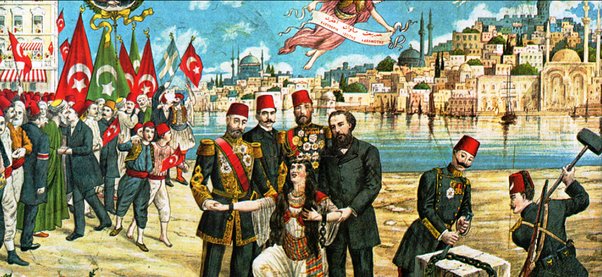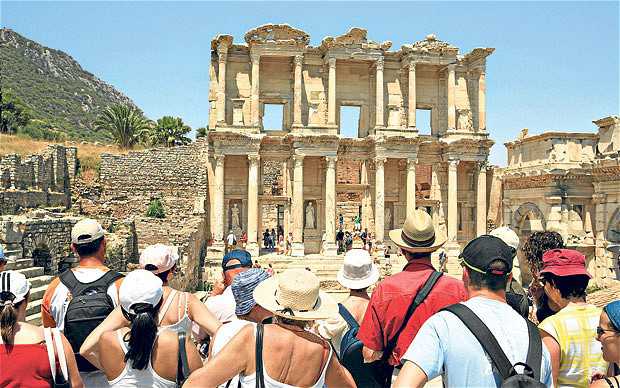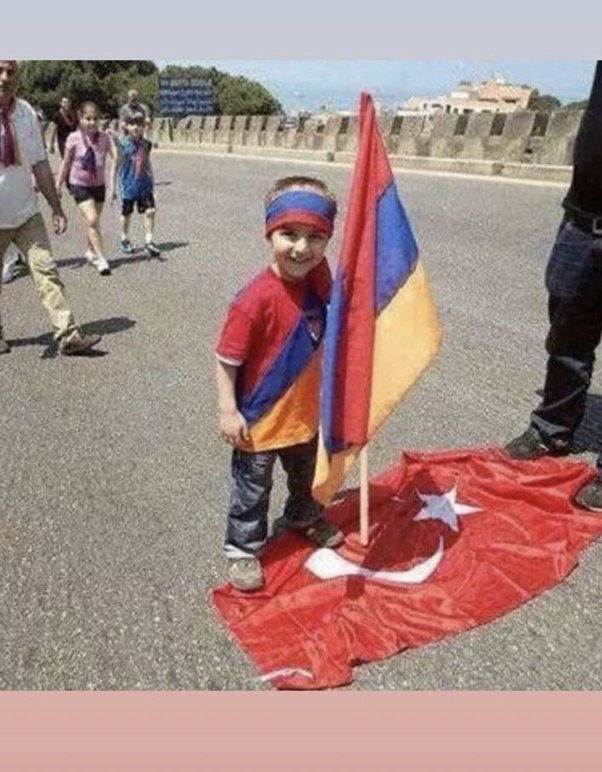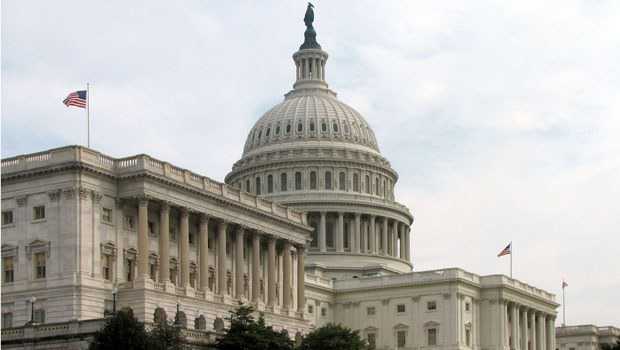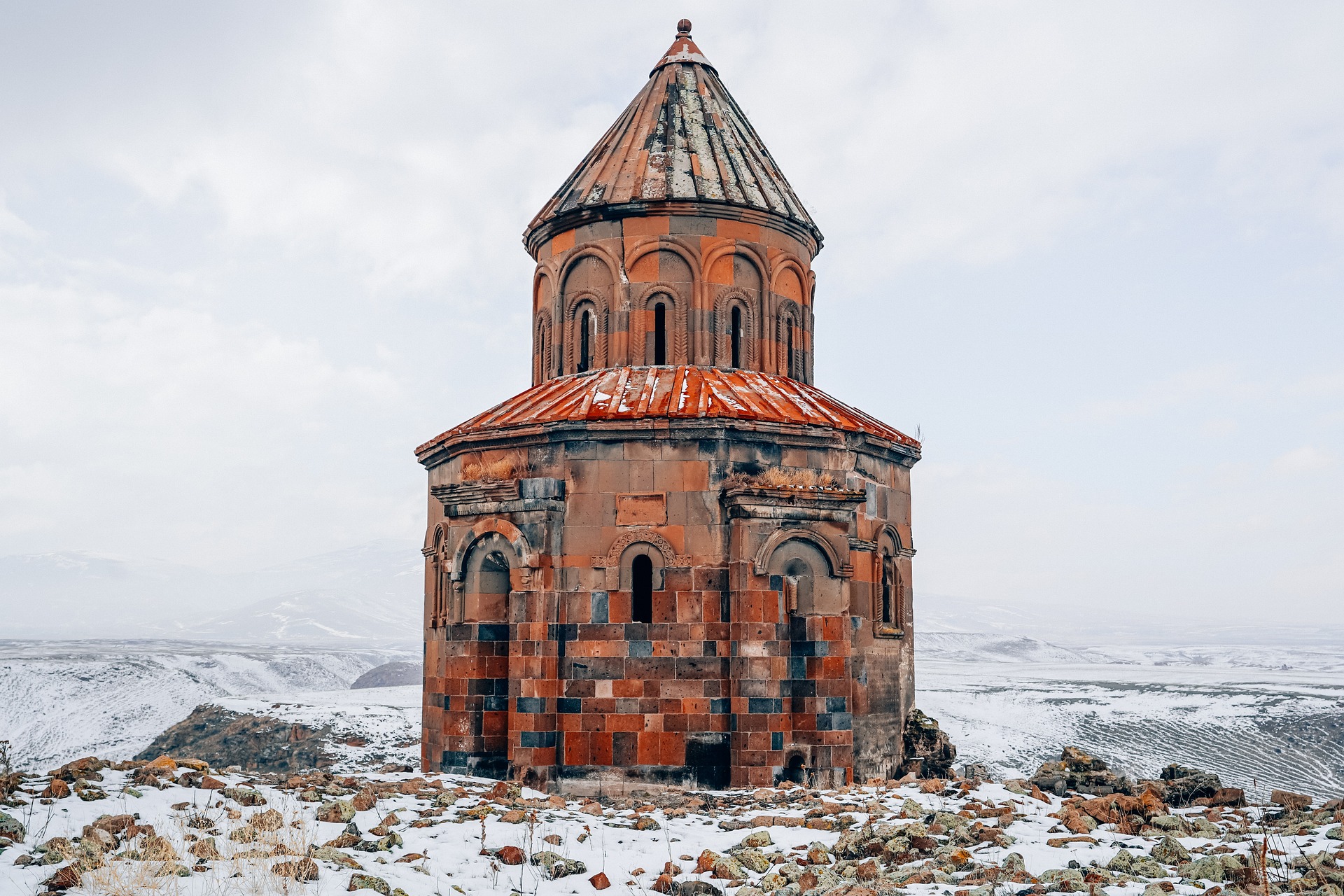Who Is This Wonder Boy? (Barack Obama),
He was born in Hawaii to an African father (Barack Obama), and a white mother (Anne Dunham), who finally divorce. He is raised by Dunham’s parents in Hawaii.
Somehow he winds up at Columbia University, works in Chicago, attends Harvard Law. In 1991 he works for a Chicago Law firm, then becomes a professor at the University of Chicago. In 2004 he is elected to the US Senate.
The Invisible Hand
If you went into a detailed look you would see the ‘Invisible Hand’ of Judaism as the guiding factor in his career.
No one just appears, and runs for President!
From Wikipedia, the free encyclopedia
(Redirected from Barack Obama.)
His Jewish racial connection must be a little far back, like Kerry’s. So far the publicity is posting this:Stanley Armour DUNHAM and Madelyn Lee PAYNE were married on 5 May 1940, and had the following children:
Jump to: navigation, search
“Obama” redirects here. For the city in Japan, see Obama, Fukui.
Barack Obama
—————————————————————————–
Junior U.S. Senator, Illinois
Incumbent
Assumed office
January 3, 2005–
Serving with Richard Durbin
Preceded by Peter Fitzgerald
Succeeded by Incumbent (2011)
—————————————————————————–
Born August 4, 1961 (age 45)
Honolulu, Hawaii
Political party Democratic
Spouse Michelle Obama
Religion United Church of Christ
Barack Hussein Obama (born August 4, 1961) is the junior United States Senator from Illinois. According to the U.S. Senate Historical Office, he is the fifth African American Senator in U.S. history and the only African American presently serving in the U.S. Senate.[1]
After graduating from law school, Obama moved to Illinois, where he was elected to the state senate in 1996 as a Democrat. Four years later, he made an unsuccessful run for the U.S. House of Representatives. After rededicating his efforts to the state senate and winning reelection in 2002, Obama ran for an open seat in the U.S. Senate two years later. Midway through the campaign, Obama delivered the keynote address at the 2004 Democratic National Convention, raising his national stature.
Obama was elected to the U.S. Senate in November 2004. Though he has not announced that he is running for any higher office, he has been identified in recent opinion polls as the second most popular choice among Democratic voters for their party’s nomination in the 2008 U.S. presidential election, behind New York Senator Hillary Rodham Clinton.[2]
Early life and career
See also: Dreams from My Father
Barack Obama was born in Honolulu, Hawaii to Barack Hussein Obama, Sr. of Alego, a village in Nyanza Province, Kenya, and Ann Dunham of Wichita, Kansas.[3] His parents met while both were attending the East-West Center of the University of Hawaii at Manoa, where his father was enrolled as a foreign student. When Obama was two years old, his parents divorced and his father returned to Kenya. His mother married Lolo Soetoro, an Indonesian foreign student, moving to Jakarta with Obama when he was six years old. Four years later, Obama returned to Hawaii to live with his maternal grandparents.[4] He was enrolled in the fifth grade at Punahou School, where he continued studies through high school and graduated in 1979.[5]
In his 1995 memoir, Dreams from My Father, Obama describes his experiences growing up in his mother’s white American middle class family. His knowledge about his absent black Kenyan father came mainly through family stories and photographs. Of his early childhood, Obama wrote: “That my father looked nothing like the people around me—that he was black as pitch, my mother white as milk—barely registered in my mind.”[6] As a young adult, he struggled to reconcile social perceptions of his multiracial heritage. Obama writes about smoking marijuana and trying cocaine during his teenage years to “push questions of who I was out of my mind”.[7]
After high school, Obama studied for two years at Occidental College in California and then transferred to Columbia College in New York City, where he majored in political science with a specialization in international relations. After receiving his Bachelors of Arts degree in 1983, Obama worked for one year at Business International Corporation. In 1985, he moved to Chicago to direct a non-profit project assisting local churches to organize job training programs for residents of poor neighborhoods.[8][9]
Obama entered Harvard Law School in 1988. In February 1990, he gained national recognition for becoming the first African American to be elected president of the Harvard Law Review.[10][11] He obtained his Juris Doctor degree magna cum laude from Harvard in 1991.[9] On returning to Chicago, Obama directed a voter registration drive, then worked for the civil rights law firm Miner, Barnhill & Galland, and taught constitutional law at the University of Chicago Law School from 1993 until his election to the U.S. Senate in 2004.[9]
State legislature
In 1996, Obama was elected to the Illinois State Senate from Chicago’s 13th District in the south-side neighborhood of Hyde Park. In January 2003, when Democrats regained control of the chamber, he was named chairman of the Senate Health and Human Services Committee.[12] Among his legislative initiatives, Obama helped to author an Illinois Earned Income Tax Credit that provided benefits to lower income families, worked for legislation that would support residents who could not afford health insurance, and helped pass bills to increase funding for AIDS prevention and care programs.[13]
In 2000, Obama made an unsuccessful Democratic primary run for the U.S. House of Representatives seat held by four-term incumbent candidate Bobby Rush. Rush, a former Black Panther and community activist, charged that Obama had not “been around the first congressional district long enough to really see what’s going on”.[14] Rush received 61% of the vote to Obama’s 30%.[15]
After the loss, Obama focused his efforts on the state Senate, authoring a law requiring police to videotape interrogations for crimes punishable by the death penalty[4] and supporting legislation that required insurance companies to cover routine mammograms.[16][17] He ran unopposed in 2002.
Reviewing Obama’s career in the Illinois Senate, commentators noted his ability to work effectively with both Democrats and Republicans, and to build coalitions.[18][19] In his subsequent campaign for the U.S. Senate, Obama won the endorsement of the Illinois Fraternal Order of Police, whose officials cited his “longtime support of gun control measures and his willingness to negotiate compromises”, despite his support for some bills that the police union had opposed.[20]
Keynote address
See also: 2004 Democratic National Convention
Midway through his campaign for U.S. Senator, Obama wrote and delivered the keynote address at the 2004 Democratic National Convention in Boston, Massachusetts.[21]
After describing his maternal grandfather’s experiences as a World War II veteran and a beneficiary of the New Deal’s FHA and GI Bill programs, Obama said:
No, people don’t expect government to solve all their problems. But they sense, deep in their bones, that with just a slight change in priorities, we can make sure that every child in America has a decent shot at life, and that the doors of opportunity remain open to all. They know we can do better. And they want that choice.
Questioning the Bush administration’s handling of the Iraq War, Obama spoke of an enlisted Marine, Corporal Seamus Ahern from East Moline, Illinois, asking, “Are we serving Seamus as well as he is serving us?” He continued:
When we send our young men and women into harm’s way, we have a solemn obligation not to fudge the numbers or shade the truth about why they’re going, to care for their families while they’re gone, to tend to the soldiers upon their return, and to never, ever go to war without enough troops to win the war, secure the peace, and earn the respect of the world.
Finally he spoke for national unity:
The pundits like to slice-and-dice our country into Red States and Blue States; Red States for Republicans, Blue States for Democrats. But I’ve got news for them too. We worship an awesome God in the Blue States, and we don’t like federal agents poking around in our libraries in the Red States. We coach Little League in the Blue States and yes, we got some gay friends in the Red States. There are patriots who opposed the war in Iraq and patriots who supported the war in Iraq. We are one people, all of us pledging allegiance to the stars and stripes, all of us defending the United States of America.
Senate campaign
A campaign banner used by Obama supporters during his 2004 bid for the Senate.Main article: Illinois United States Senate election, 2004
In 2004, Obama ran for the U.S. Senate open seat vacated by Peter Fitzgerald. In early opinion polls leading up to the Democratic primary, Obama trailed multimillionaire businessman Blair Hull and Illinois Comptroller Dan Hynes. However, Hull’s popularity declined following allegations of domestic abuse.[22]
Obama’s candidacy was boosted by an advertising campaign featuring images of the late Chicago Mayor Harold Washington and the late U.S. Senator Paul Simon; the support of Simon’s daughter; and political endorsements by the Chicago Tribune and Chicago Sun-Times.[23][24] From a crowded field of seven candidates, Obama received over 52% of the vote in the March 16, 2004 primary, emerging well ahead of his Democratic rivals.[25]
Obama was then matched in the general election against Republican primary winner Jack Ryan. However, Ryan withdrew from the race on June 25, 2004 following public disclosure of child custody divorce records containing embarrassing sexual allegations by Ryan’s ex-wife.[26] On August 8, 2004, with less than three months to go before election day, Alan Keyes accepted the Illinois Republican Party’s nomination to replace Ryan.[27] A long-time resident of Maryland, Keyes established legal residency in Illinois with the nomination.[28] Through three televised debates, Obama and Keyes expressed opposing views on stem cell research, abortion, gun control, school vouchers, and tax cuts.[29] In the general election held November 2, 2004, Obama received 70% of the popular vote to Keyes’ 27%.[30]
Senate career
Obama was sworn in as a Senator on January 4, 2005. During his first year in office Obama drew praise for his perceived attempts to avoid the limelight.[31] Nonetheless, Obama’s public profile continued to climb through 2005 and 2006. TIME magazine named him one of “the world’s most influential people,” listing him among twenty “Leaders and Revolutionaries” for his high-profile entrance to federal politics and his popularity within the Democratic Party.[32] An October 2005 article in the British journal New Statesman listed Obama as one of “10 people who could change the world.”[33] During his first two years in the Senate, Obama received Honorary Doctorates of Law from Knox College,[34] University of Massachusetts Boston,[35] Northwestern University,[36] and Xavier University of Louisiana.[37] He is a member of the following Senate committees: Foreign Relations; Health, Education, Labor and Pensions; Homeland Security and Governmental Affairs; and Veterans’ Affairs.[38]
Legislation
109th Congress
President Bush signing the Federal Funding Accountability and Transparency Act as bill sponsors Tom Coburn (R-OK) and Obama look on.[39]Obama sponsored 152 bills and resolutions brought before the 109th Congress in 2005 and 2006, and cosponsored another 427.[40][41] His first bill was the “Higher Education Opportunity through Pell Grant Expansion Act”.[42] Entered in fulfillment of a campaign promise, the bill proposed increasing the maximum amount of Pell Grant awards to help needy students pay their college tuitions.[43] The bill did not progress beyond committee and was never voted on by the Senate.
Obama took an active role in the Senate’s drive for improved border security and immigration reform. Beginning in 2005, he co-sponsored the “Secure America and Orderly Immigration Act” introduced by Sen. John McCain (R-AZ).[44] Obama later added three amendments to S. 2611, the “Comprehensive Immigration Reform Act”, sponsored by Sen. Arlen Specter (R-PA).[45][46] S. 2611 passed the Senate in May 2006, but failed to gain majority support in the U.S. House of Representatives.[47] In September 2006, Obama supported a related bill, the Secure Fence Act, authorizing construction of fencing and other security improvements along the United States–Mexico border.[48] President Bush signed the Secure Fence Act into law in October 2006, calling it “an important step toward immigration reform.”[49]
Partnering first with Sen. Richard Lugar (R-IN), and then with Sen. Tom Coburn (R-OK), Obama successfully introduced two initiatives bearing his name. “Lugar-Obama” expands the Nunn-Lugar cooperative threat reduction concept to conventional weapons, including shoulder-fired missiles and anti-personnel mines.[50][51][52] The “Coburn-Obama Transparency Act” provides for a website, managed by the Office of Management and Budget, listing all organizations receiving Federal funds from 2007 onward, and providing breakdowns by the agency allocating the funds, the dollar amount given, and the purpose of the grant or contract.[53][54] On December 22, 2006, President Bush signed into law the “Democratic Republic of the Congo Relief, Security, and Democracy Promotion Act”, marking the first federal legislation to be enacted with Obama as its primary sponsor.[55]
110th Congress
This section is a stub. You can help by expanding it.
During the first two weeks of the Democrat-controlled 110th Congress, Obama sponsored six bills and resolutions and cosponsored another 24.[56][57] His legislative activities during the current session’s first days focused primarily on ethics and energy-related bills.[58][59][60][61][62]
Official travel
Senate Foreign Relations Committee Chairman Richard Lugar (R-IN) and Committee member Barack Obama at a Russian base where mobile launch missiles are being destroyed by the Nunn-Lugar program.During the August recess of 2005, Obama traveled with Sen. Richard Lugar (R-IN), Chairman of the Senate Foreign Relations Committee, to Russia, Ukraine and Azerbaijan. The trip focused on strategies to control the world’s supply of conventional weapons, biological weapons, and weapons of mass destruction as a strategic first defense against the threat of future terrorist attacks.[63] Lugar and Obama inspected a Nunn-Lugar program-supported nuclear warhead destruction facility at Saratov, in southern European Russia.[64] In Ukraine, they toured a disease control and prevention facility and witnessed the signing of a bilateral pact to secure biological pathogens and combat risks of infectious disease outbreaks from natural causes or bioterrorism.[65]
In January 2006 Obama joined a Congressional delegation for meetings with U.S. military in Kuwait and Iraq. After the visits, Obama traveled to Jordan, Israel, and the Palestinian territories. While in Israel, Obama met with Israeli Foreign Minister Silvan Shalom.[66] Obama also met with a group of Palestinian students two weeks before Hamas won the January 2006 Palestinian legislative election. ABC News 7 (Chicago) reported Obama telling the students that “the US will never recognize winning Hamas candidates unless the group renounces its fundamental mission to eliminate Israel”, and that he had conveyed the same message in his meeting with Palestinian authority President Mahmoud Abbas.[67]
Obama left for his third official trip in August 2006, traveling to South Africa and Kenya, and making stops in Djibouti, Ethiopia and Chad. Obama flew his wife and two daughters from Chicago to join him in a visit to his father’s birthplace, a village near Kisumu in Kenya’s rural west.[68] Newspapers reported enthusiastic crowds at Obama’s public appearances.[69] In a public gesture aimed to capitalize on his celebrity and encourage more Kenyans to undergo voluntary HIV testing, Obama and his wife took HIV tests at a Kenyan clinic.[70] In a nationally televised speech at the University of Nairobi, Obama spoke forcefully on the influence of ethnic rivalries in Kenyan politics.[71] The speech touched off a public debate among rival leaders, some formally challenging Obama’s remarks as unfair and improper, others defending his positions.[72][73]
Political advocacy
On the role of government in economic affairs, Obama has written: “we should be asking ourselves what mix of policies will lead to a dynamic free market and widespread economic security, entrepreneurial innovation and upward mobility […] we should be guided by what works.”[74] Speaking before the National Press Club in April 2005, Obama defended the New Deal social welfare policies of Franklin D. Roosevelt, associating Republican proposals to establish private accounts for Social Security with Social Darwinism.[75] In a May 2006 letter to President Bush, he joined four other midwest farming state Senators in calling for the preservation of a $0.54 per gallon tariff on imported ethanol.[76] Obama spoke out in June 2006 against making recent, temporary estate tax cuts permanent, calling the cuts a “Paris Hilton” tax break for “billionaire heirs and heiresses”.[77] Speaking in November 2006 to members of Wake Up Wal-Mart, a union-backed campaign group, Obama said: “You gotta pay your workers enough that they can actually not only shop at Wal-Mart, but ultimately send their kids to college and save for retirement.”[78][79]
Obama is among the first national politicians to engage the public through new Internet communication tools. He began podcasting from his U.S. Senate web site in late 2005. He has responded to and personally participated in online discussions hosted on politically-oriented blogosphere sites.[80] Obama has expressed support for telecommunications legislation to protect network neutrality on the internet: “It is because the Internet is a neutral platform that I can put out this podcast and transmit it over the Internet without having to go through any corporate media middleman. I can say what I want without censorship or without having to pay a special charge. But the big telephone and cable companies want to change the Internet as we know it.”[81]
He was an early opponent of Bush administration policies on Iraq. In the fall of 2002, Obama stated: “I am not opposed to all wars. I’m opposed to dumb wars. […] You want a fight, President Bush? Let’s finish the fight with Bin Laden and al-Qaeda, through effective, coordinated intelligence, and a shutting down of the financial networks that support terrorism, and a homeland security program that involves more than color-coded warnings.”[82] Speaking before the Chicago Council on Global Affairs in November 2006, he said: “The days of using the war on terror as a political football are over. […] It is time to give Iraqis their country back, and it is time to refocus America’s efforts on the wider struggle yet to be won.” He is calling for a phased withdrawal of American troops to begin in 2007.[83]
During his first year as a U.S. senator, in a move more typically taken after several years of holding high political office, Obama established a leadership political action committee, Hopefund, for channeling financial support to Democratic candidates. Obama participated in 38 fundraising events in 2005, helping to pull in $6.55 million for candidates he supports and his own 2010 re-election fund.[84] The New York Times described Obama as “the prize catch of the midterm campaign” because of his campaigning for fellow Democratic Party members running for election in the 2006 midterm elections.[85] Hopefund gave $374,000 to federal candidates in the 2006 election cycle, making it one of the top donors to federal candidates for the year.[85]
Obama has encouraged Democrats to reach out to evangelicals and other church-going people, saying, “if we truly hope to speak to people where they’re at—to communicate our hopes and values in a way that’s relevant to their own—we cannot abandon the field of religious discourse.”[86][87] In December 2006, Obama joined Sen. Sam Brownback (R-KS) at the “Global Summit on AIDS and the Church” organized by church leaders Kay and Rick Warren.[88] Together with Warren and Brownback, Obama took an HIV test, as he had done in Kenya less than four months earlier. Obama encouraged “others in public life to do the same” to show “there is no shame in going for an HIV test”.[89] Before the conference, pro-life groups called on Warren to rescind the invitation, saying: “If Senator Obama cannot defend the most helpless citizens in our country, he has nothing to say to the AIDS crisis.”[90]
2008 presidential election
This section documents a current event.
Information may change rapidly as the event progresses.
Newsweek magazine cover story, “Is America Ready?”, December 25, 2006 – January 1, 2007[91]Obama’s keynote speech to the 2004 Democratic National Convention sparked expectations that he would eventually run for U.S. President.[92] Speculation on a 2008 presidential run intensified after Obama’s decisive U.S. Senate election win in November 2004, prompting him to tell reporters: “I can unequivocally say I will not be running for national office in four years”.[93] But in an October 2006 interview on the television program Meet the Press, Obama appeared to open the possibility of a 2008 presidential bid.[94] Following Obama’s statement, opinion polling organizations added his name to surveyed lists of Democratic candidates. The first such poll ranked Obama in second place with 17% support among Democrats after Hillary Clinton who placed first with 28% of the responses.[95]
Sen. Richard Durbin (D-IL) and Illinois State Comptroller Daniel Hynes were early advocates for a 2008 Obama presidential run.[96][97] Celebrity television show host Oprah Winfrey and actors George Clooney, Kristin Chenoweth, and Matt Damon have also expressed support for Obama entering the 2008 presidential race.[98][99][100][101]
Commentators have suggested that Obama’s chances to be elected president would be better in 2008 than in 2012 or later. In an October 2006 editorial published in the Chicago Tribune, Newton Minow compared prospects for a 2008 Obama presidential bid to John F. Kennedy’s successful 1960 presidential campaign.[102] A December 2006 op-ed by conservative columnist George Will detailed four reasons why he thinks now is a good time for Obama to run for president.[103]
Recent speaking engagements and other actions by Obama suggest he is preparing for a presidential run. In September 2006, Obama was the featured speaker at Iowa Senator Tom Harkin’s annual steak fry, a political event traditionally attended by presidential hopefuls in the lead-up to the Iowa caucus.[104] In December 2006, Obama spoke at a New Hampshire event celebrating Democratic Party midterm election victories in the first-in-the-nation U.S. presidential primary state.[105][106] On January 14, 2007, the Chicago Tribune reported that Obama has begun assembling his team for a 2008 presidential campaign to be headquartered in Chicago [107] and will be announcing a Presidential Exploratory Committee within a week. [108]
Controversy
On November 1, 2006 the Chicago Tribune reported that on the same day that Obama’s home in a South Side neighborhood of Chicago was purchased an adjoining vacant lot was bought by the wife of Antoin Rezko, an Illinois businessman charged with political influence peddling. Obama later bought a ten-foot-wide strip of lawn from Rezko.[109] Two days after the report, the same newspaper ran an editorial calling on Obama to explain why he would “allow himself any connection” to a developer who “notoriously attaches himself to political figures, often parlaying friendships into business dealings that have attracted official suspicions for several years.”[110] The following day the Chicago Tribune reported Obama’s statement that it was a mistake to have engaged “in this or any other personal business dealing that would allow [Rezko], or anyone else, to believe that he had done me a favor. For that reason, I consider this a mistake on my part and I regret it.”[111] On December 24, Obama’s spokesman confirmed that one of Obama’s 2005 summer interns also had ties to Rezko, although he denied any favoritism. The Obama office had nearly 100 interns that summer.[112]
The Tribune’s report does not accuse the Senator of any wrongdoing or unethical conduct and no evidence to the contrary has been uncovered. A December 2006 article posted to The New Republic online site criticized follow-up reporting in the Chicago Tribune, Slate, and Washington Post for failing to add value to the story: “The role of the press in all this should be to put perceptions in line with the facts as they stand, not inflate the perceptions and raise the distant possibility that the facts might line up behind them.”[113]
Personal life
While working at the corporate law firm Sidley Austin LLP in the summer of 1989, Obama met Michelle Robinson, then an associate attorney at the firm. They married in 1992, and have two daughters, Malia (born 1999) and Sasha (born 2001). The Obamas are members of Chicago’s Trinity United Church of Christ.[114][115] Of his religious affiliation, Obama has written:
I was drawn to the power of the African American religious tradition to spur social change. […] In the history of these struggles, I was able to see faith as more than just a comfort to the weary or a hedge against death; rather, it was an active, palpable agent in the world. […] It was because of these newfound understandings–that religious commitment did not require me to suspend critical thinking, disengage from the battle for economic and social justice, or otherwise retreat from the world that I knew and loved–that I was finally able to walk down the aisle of Trinity United Church of Christ one day and be baptized. It came about as a choice and not an epiphany; the questions I had did not magically disappear. But kneeling beneath that cross on the South Side of Chicago, I felt God’s spirit beckoning me. I submitted myself to His will, and dedicated myself to discovering His truth.[116]
Works
Before entering politics, Obama wrote Dreams from My Father, a memoir of his youth and early career. The book was published in 1995, then reprinted in 2004 with a new preface and an annex containing the text of his 2004 Democratic Convention keynote speech. The audio book edition earned Obama the 2006 Grammy Award for Best Spoken Word Album.[117]
In December 2004, Obama made a $1.9 million deal for three books.[118] The first, The Audacity of Hope, was published in October 2006, and discusses Obama’s political convictions.[119] The book has remained at or near the top of the New York Times Best Seller list since its publication.[120] The second book covered under the publishing contract is a children’s book to be co-written with his wife Michelle and their two young daughters, with profits going to charity. The content of the third book has yet to be announced.[118]
Popular culture
Supporters describe Obama’s broad appeal as a cultural rorschach test, an ink spot on which his fans can project their personal histories and aspirations.[121][122] Obama’s self-narrative helps encourage diverse multiethnic affinities. In Dreams from My Father, he links his maternal family history to possible Native American ancestors and distant relatives of Jefferson Davis, president of the southern Confederacy during the American Civil War.[123] Speaking before an elderly Jewish audience during his 2004 campaign for U.S. Senate, Obama likened the linguistic roots of his East African first name Barack to the Hebrew word baruch, meaning blessed.[124]
Media sources have mirrored and amplified his everyman image. An October 2006 interview on The Oprah Winfrey Show highlighted the ethnic diversity of Obama’s extended family. Noting that his half-Indonesian half-sister is married to a Chinese-Canadian, the program cited descriptions by Obama’s African American wife of family holiday gatherings as a “mini-United Nations.”[125] A headline in The Nation magazine invited comparisons between Obama’s first year as U.S. Senator and the popular 1939 movie Mr. Smith Goes to Washington, where actor James Stewart stars as an underdog small-town hero standing up to political corruption in the U.S. Congress.[126] Another article in The Nation analyzed Obama’s ability to “transcend race” with predominantly white audiences.[127] Conversely, New York Daily News syndicated columnist Stanley Crouch has questioned perceptions from within the African American community of Obama as “one of us”.[128]
TIME magazine cover story, October 23, 2006[129]A New York Times op-ed by David Brooks, published during Obama’s promotion of his bestselling book The Audacity of Hope and campaigns for Democratic candidates before the 2006 midterm election, was noted by an article in the online magazine Slate as evidence of Obama’s potential popularity among moderate Republicans and independents.[130] Both folk rock musician Neil Young and urban hip hop artist Common have referenced Obama’s presidential prospects in popular song lyrics.[131][132]
In his October 2006 Time magazine cover story, Primary Colors author Joe Klein compared the cultural sources of Obama’s rapid rise and crossover appeal to those of U.S. celebrity icons Tiger Woods, Oprah Winfrey and Michael Jordan. Asked to comment, Obama said: “Figures like Oprah, Tiger, Michael Jordan give people a shortcut to express their better instincts […] I think it’s healthy, a good instinct. I just don’t want it to stop with Oprah. I’d rather say, If you feel good about me, there’s a whole lot of young men out there who could be me if given the chance.”[129]
In December 2006, Obama taped a television commercial for ESPN’s Monday Night Football game between his hometown Chicago Bears and the St. Louis Rams. The commercial mocked the political frenzy surrounding him and his possible presidential candidacy. “So tonight I’d like to put all the doubts to rest,” he said. “And tonight, after a lot of thought and a good deal of soul-searching, I would like to announce to my hometown of Chicago and all of America that I’m ready…for the Bears to go all the way, baby!”[133]

